HIPS (High Impact Polystyrene) is a valuable special functional filament in the field of 3D printing, which occupies an important position in the printing of complex models due to its unique solubility and excellent mechanical properties. As a great partner to ABS, it plays a key role in dual-printhead 3D printing, which is indispensable for both industrial-grade manufacturing and creative design.
What are HIPS 3D printing filaments?
HIPS 3D printing filaments are special thermoplastic materials that excel for their excellent impact resistance and solubility, and are often used as soluble support structures for materials such as ABS. When working in a dual-printhead printer, it can be printed synchronously with the main material, and after the model is formed, it can be dissolved and removed by using limonene solvent, which is especially suitable for printing models with complex geometric shapes. In addition, HIPS not only has good mechanical properties, but also is very convenient to process, which can be used as a support material and can independently print functional parts with high toughness requirements, which is an important choice for industrial-grade FDM printing.
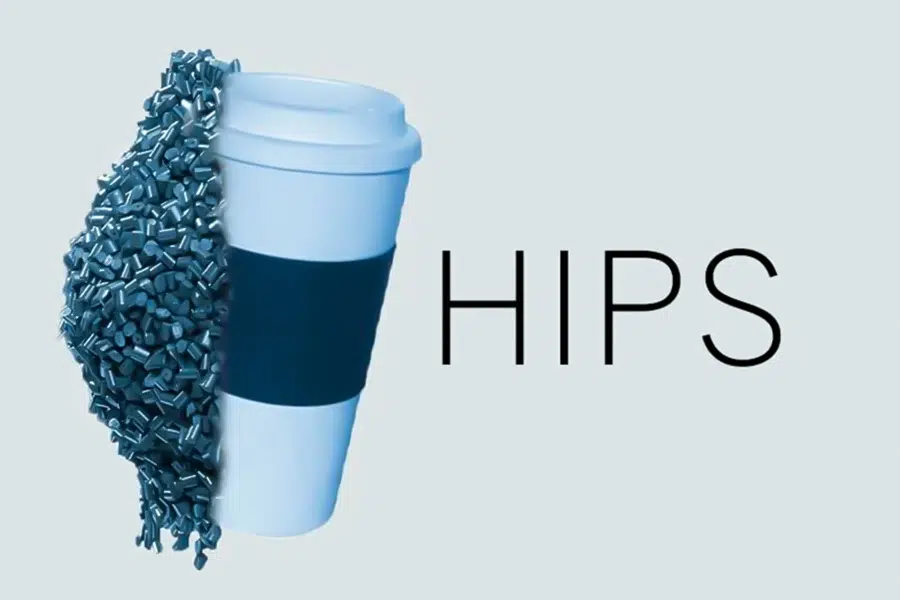
What are the features of HIPS 3D printing filaments?
Soluble supports
HIPS is completely soluble in limonene. When used in conjunction with ABS, the support structure is completely dissolved, preserving the fine details of the model. This feature revolutionizes the traditional manual removal of supports and effectively avoids damage to the model during the removal process.
Excellent mechanical properties
HIPS is 5 to 10 times more impact-resistant than regular polystyrene, making it ideal for printing a wide range of functional parts. At the same time, shrinkage is at a low level of 0.3 – 0.7%, which is lower than ABS, greatly reducing the risk of warpage problems when printing.
Easy post-processing
In post-processing, HIPS is a breeze. It can be sanded, painted, or lightly polished with acetone steam, which is slightly weaker than ABS, but still meets the needs of most applications.
The above details HIPS 3D printing filaments in many ways. If you still want to know about its application scenarios, usage skills, etc., please feel free to tell me.
Why Use 240-260°C Nozzle for HIPS?
HIPS (High Impact Polystyrene) 3D printing requires a high nozzle temperature (240-260°C) for the following reasons:
Material properties
HIPS is a modified material of polystyrene that uses rubber to improve impact resistance, but its underlying molecular chains still require a higher temperature to melt adequately. The melting temperature of ordinary PS is about 160-220°C, while HIPS has a higher melt viscosity due to the presence of rubber phase, and a higher temperature (240-260°C) is required to achieve fluidity.
Melt fluidity
3D printing requires the material to have a low viscosity when passed through a thin nozzle (typically 0.4 mm). HIPS has a significant reduction in viscosity at high temperatures, ensuring interlayer bonding and detailed molding. Insufficient temperature can lead to poor extrusion, stringing, or interlayer peeling.
Interlayer bond strength
The high temperature allows the melt to fully penetrate the previous deposited layer and increase the mechanical strength. If the temperature is too low, the molecular diffusion between the layers is insufficient, and the printed part is easy to brittle.
Compatibility with support materials
HIPS is often used as a soluble support material (e.g. in conjunction with ABS) and needs to be printed simultaneously with the main material. The high temperature ensures the stability of the HIPS support structure and avoids deformation or falling off due to temperature differences.
Additive effects
Some HIPS contain tougheners or flame retardants that may further increase the melting temperature. Manufacturers usually recommend high temperature ranges based on the formulation.
Notes:
- Excessive temperature may lead to thermal degradation (smoke, odor) and need to be adjusted in conjunction with the printing speed.
- The printing cavity should be closed or a hot plate should be added to reduce cooling stress and avoid warping.
In summary, the high temperature requirements of HIPS are determined by the chemical structure of the material, the processing requirements, and the functional application.
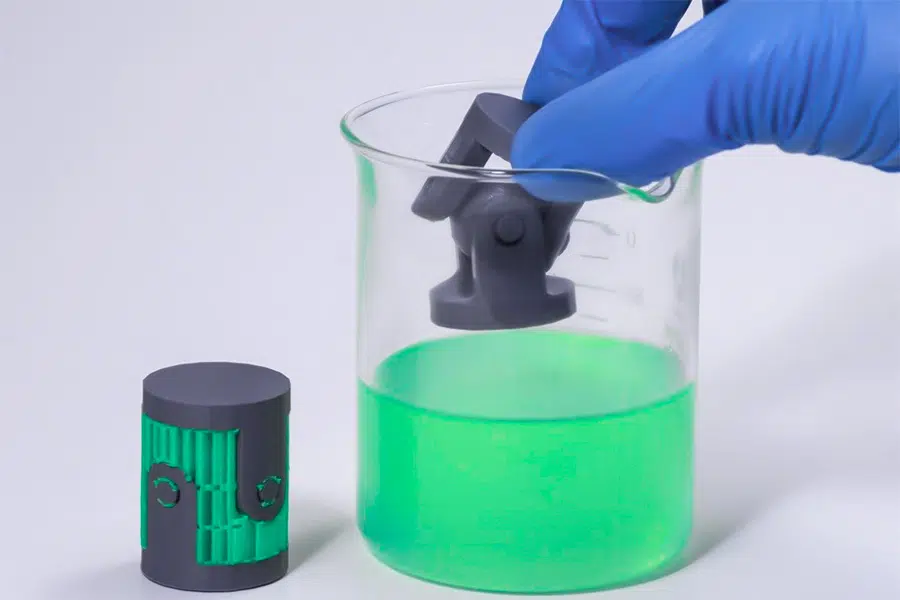
HIPS vs PLA: Which Wins in Engineering?
The following is a comparison table of HIPS and PLA in engineering applications, which is a comprehensive comparison from the aspects of key performance parameters, applicable scenarios and restrictions:
| Comparison dimensions | HIPS | PLA | Engineering application preferred |
|---|---|---|---|
| Mechanical strength | Medium-high (strong impact resistance, good toughness) | Medium (high rigidity but high brittleness) | HIPS (impact-resistant scenario) |
| Temperature resistance | Heat deformation temperature 75-90℃ | 50-60℃ (easy to soften) | HIPS (high temperature environment) |
| Dimensional stability | Shrinkage rate 0.3-0.7% (requires hot bed) | Shrinkage rate <0.2% (almost no warping) | PLA (precision size parts) |
| Support compatibility | Soluble in limonene (preferred for complex supports) | Physical removal required (easily damaged models) | HIPS (complex structures) |
| Post-processing difficulty | Solvent polishing/dissolvable | Only supports grinding/gluing | HIPS (efficient processing) |
| Chemical resistance | Resistant to weak acids and weak bases | Easily corroded by strong alkalis | HIPS (chemical environment) |
| Degradability | Non-biodegradable | Compostable (6-12 months) | PLA (environmental protection requirements) |
| Printing difficulty | Requires high temperature (240-260℃) and closed environment | Low temperature (190-220℃), open printing is OK | PLA (newbie friendly) |
| Typical engineering scenarios | Functional prototypes, drop test pieces, fluid models | Display prototypes, light load structures, short-term tooling | Choose according to needs |
| Cost | Higher (about 200 yuan/kg) | Lower (about 100 yuan/kg) | PLA (cost sensitive) |
Is HIPS Toxic During Printing?
Yes, HIPS (High Impact Polystyrene) releases toxic volatile organic compounds (VOCs) during 3D printing, mainly including styrene monomers and other thermal degradation by-products, which need to be strictly protected. The following are the key risks and protective measures:
1. Toxin release during printing
Styrene
- Release: HIPS releases styrene at high nozzle temperatures (240-260°C), typically at concentrations < 0.5 ppm (below the NIOSH recommended exposure limit REL), but may still be a health hazard if inhaled over a long period of time (neurotoxic, carcinogenic IARC 2B).
- Other VOCs: may be accompanied by the release of aromatic hydrocarbons such as toluene, ethylbenzene, etc. (depending on the material formulation).
Risk level
- Short-term exposure: irritation of the eyes and respiratory tract, causing headache and nausea.
- Long-term exposure: increases the risk of liver and kidney injury and central nervous system depression.
2. Required precautions
Forced exhaust system
- Enclosed printers or external exhaust ducts (e.g., industrial-grade exhaust fans) filtered with HEPA activated carbon to ensure a < 0.5 ppm styrene concentration in the work area.
- Avoid natural ventilation: Styrene is denser than air and tends to accumulate in low places.
Personal Protective Equipment (PPE)
- Respiratory protection: Wear a gas mask with an organic vapor filter cartridge (e.g., 3M 6000 Series 60926 cartridge).
- Eye/skin protection: chemical goggles, solvent-resistant gloves (e.g. nitrile).
3. Additional risks of post-processing (solvent dissolution).
Dichloromethane (DCM) toxicity
- HIPS often uses DCM to dissolve support structures (e.g., when used with ABS), but DCM is a highly toxic solvent (OSHA PEL 25 ppm, ACGIH TLV 50 ppm).
- Acute exposure: causes vertigo, suffocation, and even death (cardiac sensitivity).
- Chronic exposure: liver and kidney damage, carcinogenicity (IARC 2A).
PPE Level 3 Protection Requirements
- Full body protection: chemical protective clothing (Type 4 barrier), face shield, air supply system (e.g. DCM concentration> 10ppm).
- Operating environment: It must be carried out in an explosion-proof fume hood, and it is forbidden to use it in an open environment.
4. Alternatives & Safety Recommendations
Substitution of low-toxicity materials:
- PLA PVA support (water soluble) can be used instead of HIPS ABS combination to avoid DCM risk.
Real-time monitoring:
- Install a VOC detector (such as a styrene sensor) and automatically shut down when the standard is exceeded.
Waste Disposal:
- Printing waste and solvents are sorted by hazardous waste (e.g., EPA F-list).
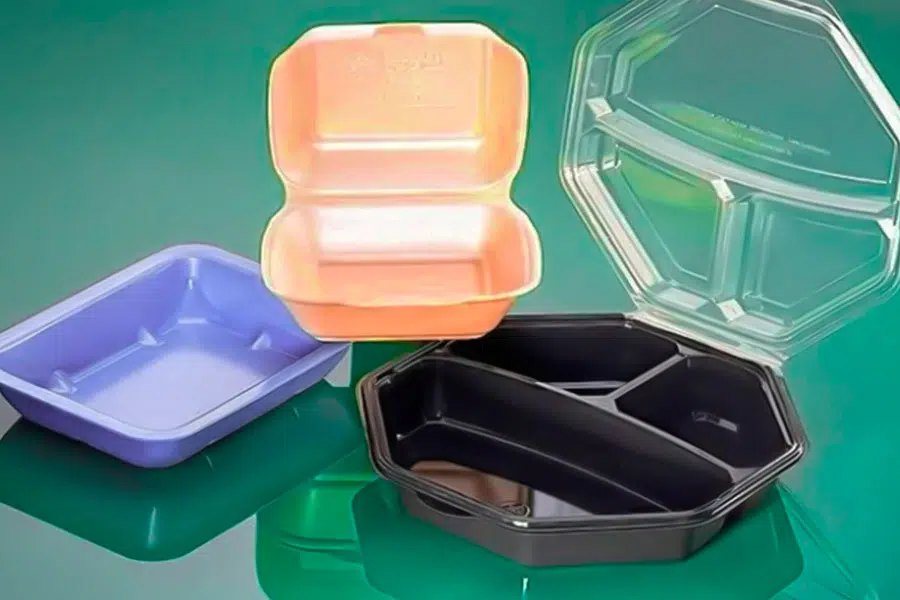
Why Pair HIPS with PVA in Dual Extrusion?
The wide application of HIPS (high-impact polystyrene) and PVA (polyvinyl alcohol) combination in dual-nozzle 3D printing is mainly based on the optimal balance of dissolution efficiency, support structure accuracy, material compatibility and safety. Here’s why:
1. Complementarity of dissolution efficiency
Water solubility advantages of PVA
- Rapid dissolution: In a warm water bath at 60°C, the dissolution rate of PVA can reach 8 mm/h, which is much higher than the 3 mm/h of HIPS in limonene (D-limonene), which is suitable for rapid removal of support structures.
- Environmental protection: only need to be dissolved in water, no organic solvent (such as limonene or dichloromethane for HIPS), reducing the risk of toxicity.
Solvent compatibility of HIPS
- When higher strength or temperature resistance is required for the model, HIPS can be used as a support material, in conjunction with a primary material such as ABS, to be dissolved by limonene (but be aware of solvent toxicity).
2. Significant improvement in the accuracy of the support structure
The fine molding capability of PVA
- It can print ultra-fine hollow structures with a 0.1mm aperture (such as mesh supports, overhanging inner cavities), which is more than 30% more accurate than traditional supports (such as PLA or ABS supports) and reduces post-processing and grinding.
- Low adhesion carryover: The surface is smooth after water solubilization, which avoids model damage caused by mechanical dismantling.
The rigid support role of HIPS
- In scenarios that require high support strength (such as long-span overhangs), the stiffness of HIPS is better than that of PVA, and it matches the thermal shrinkage of ABS, reducing the risk of warpage.
3. Material compatibility and printing stability
Similar print parameters
- The recommended nozzle temperature for PVA and HIPS is in the range of 200-220°C (higher temperature is required for some HIPS), and it is compatible with common master materials such as PLA/ABS, reducing the risk of plugging caused by the temperature difference of dual nozzles.
- Both need to be stored dry (hygroscopic) and managed in the same way.
Thermal deformation synergy
- The coefficient of thermal expansion of PVA and HIPS is close to that of the main material (e.g., PLA), avoiding separation or cracking of the support from the model due to uneven cooling.
4. Balance security and cost
A non-toxic alternative to PVA
- The water-soluble feature avoids the use of organic solvents (e.g., limonene, methylene chloride) and meets the safety needs of home/education scenarios.
The economics of HIPS
- Compared with specialized water-soluble support materials (such as BVOH), HIPS is less costly and suitable for large-volume support structures.
Comparison of typical application scenarios
| Scenario | HIPS+ABS | PVA+PLA |
|---|---|---|
| Dissolution method | Limonene (toxic, requires ventilation) | Water (safe, can be operated at room temperature) |
| Support accuracy | Medium-high (above 0.2mm) | Very high (0.1mm hollowing) |
| Applicable models | Large ABS functional parts, high temperature resistant parts | Complex PLA models, fine structures (such as gears, reliefs) |
| Cost | Low (solvents can be reused) | High (PVA unit price is expensive) |
The HIPS PVA combination combines precision, strength and safety through the complementarity of water and solvent solubility, and is especially suitable for multi-material precision printing. The pure water-soluble PVA PLA combination has become the mainstream choice in the consumer market due to its easy operation. In industrial scenarios, HIPS ABS is still used for high-strength requirements, but solvent hazards need to be strictly controlled.
How Does HIPS Revolutionize Prototyping?
1. Automotive: High-precision wind tunnel models
- Case Study: BMW uses HIPS 3D printed wind tunnel test model with a surface roughness of Ra 3.2μm (VDI 3400 standard) to replace traditional CNC machining and reduce cycle time by 50%.
- Advantage:
Lightweight (density 1.04g/cm³) reduces the cost of wind tunnel testing.
Impact resistance (rubber modified) ensures structural stability at high air flows.
Solvent soldering is ABS compatible for easy assembly of large components.
2. Medical modeling: detachable anatomical models
- Case Study: HIPS anatomical model based on CT data, layer thickness 0.15mm, ISO 10993-5 biocompatibility test for surgical rehearsal.
- Advantage:
Limonene dissolves the support to achieve non-destructive separation of complex structures such as blood vessels/nerves.
Low cost (60% reduction in material cost compared to light-curable resins).
3. Consumer Electronics: Functional Verification Prototypes
- Example: Dell prints a prototype of a laptop case with HIPS and tests the drop performance (impact strength is 200% higher than PLA).
- Advantage:
Heat deflection temperature (80-90°C) Adaptable to electronic heat dissipation tests.
Plating is possible and can be used directly for appearance review.
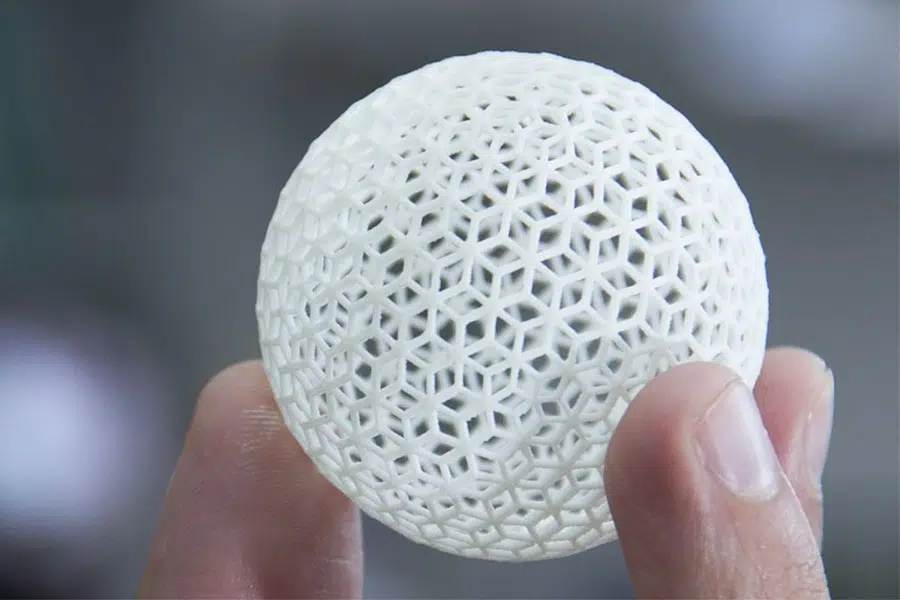
4. Summary of industrial-grade advantages
| Index | HIPS performance | Comparison with traditional methods |
|---|---|---|
| Surface quality | Ra 3.2μm (can be sprayed directly) | CNC requires post-processing (Ra 1.6μm) |
| Cost efficiency | ¥0.3-0.5/g (ABS compatible) | Silicone mold ¥2000+/time |
| Design freedom | Hollow structure + built-in buckle one-time molding | Split assembly increases 20% of working hours |
Can HIPS Replace Surgical PMMA?
1. Sterilization compatibility: HIPS has obvious shortcomings
- HIPS: Resistant only to ethylene oxide (EtO) sterilization (in accordance with FDA 510(k) 21 CFR 880.2920), but unable to withstand high-pressure steam (121°C) or gamma irradiation, greatly limiting its use in surgical instruments, implant trays, etc.
- PMMA: Compatible with all major sterilization methods (including high-pressure steam, dry heat, irradiation), it is the material of choice for bone cement and dental base.
2. Mechanical properties: HIPS strength is insufficient
- Flexural strength: HIPS is only 75 MPa, which is much lower than the 110 MPa of PMMA bone cement (ISO 5833 standard), which cannot meet the load-bearing needs (e.g. orthopedic temporary fixators).
- Abrasion resistance: HIPS has a Rockwell hardness (R scale) of 80-85, while PMMA reaches 90-95, which is easy to wear and tear (e.g. denture base) with long-term contact.
3. Biocompatibility: HIPS requires strict certification
- Short-term exposure: HIPS is tested for ISO 10993-5 cytotoxicity and can be used in non-implantable anatomical models (e.g., surgical planning).
- Long-term implantation: PMMA has been clinically validated for decades (e.g., bone cement), while HIPS lacks long-term biostability data, and residual styrene monomers may trigger an inflammatory response.
4. Alternate Scenarios and Limitations
| Application scenario | HIPS feasibility | Reason |
|---|---|---|
| Anatomical model | ✅ Applicable (low cost, dissolvable support) | Non-implanted, short-term contact, no need for autoclave sterilization. |
| Surgical guide | ❌ Not applicable | Autoclave sterilization is required, HIPS heat deformation temperature is insufficient. |
| Dental temporary crown | ⚠️ Limited replacement (short-term use only) | Poor wear resistance, shorter life than PMMA. |
| Bone cement replacement | ❌ Completely unfeasible | Mechanical strength and biocompatibility are not up to standard. |
In summary, HIPS can only replace PMMA in non-sterilizing, non-load-bearing, short-term use of medical scenarios (such as teaching models), while implantable or high-intensity applications still require PM
Is Recycled HIPS Viable for 3D Printing?
1. Performance attenuation and modification scheme of recyclated material
Degradation of mechanical properties:
- After three recoveries, the impact strength of HIPS decreased by 42% (due to rubber phase degradation), and 2% SEBS toughener was added to restore toughness.
- Melt Flow Index (MFI) fluctuates by ±15%, which may affect extrusion stability, and the printing temperature needs to be adjusted (± 5°C compensation).
Impurity Risk:
- Regrind may contain trace amounts of PVC or label residues, and melt filtration (≤ 50μm strainer) is required to prevent nozzle clogging.
2. Certification and pre-treatment requirements
GRS 4.0 Certification Standards:
- The moisture content of the particles must be < 0.02% (otherwise the bubbles will burst during printing, resulting in poor interlayer binding).
- Material traceability reports are required to ensure that no toxic additives (e.g., brominated flame retardants) are available.
Pretreatment process:
- Drying conditions: 80 °C oven for 4 hours or dehumidification dryer (dew point -40 °C) for 2 hours.
- Blending: It is recommended to mix with 30% native HIPS to balance performance and cost.
3. Suggestions for optimizing printing parameters
| Parameters | Recycled HIPS (unmodified) | Recycled HIPS+2% SEBS | Native HIPS (comparison) |
|---|---|---|---|
| Nozzle temperature | 245-255°C | 240-250°C | 240-260°C |
| Hot bed temperature | 100°C | 95°C | 100-110°C |
| Printing speed | ≤50mm/s | ≤60mm/s | 60-80mm/s |
| Interlayer bonding strength | ★★☆☆☆ | ★★★☆☆ | ★★★★☆ |
4. Applicable Scenarios and Limitations
Recommended Applications:
- Non-structural parts (e.g., packaging prototypes, presentation models).
- Functional test pieces for short-term use (SEBS modification required).
Scenarios to avoid:
- High-precision gears or load-bearing parts (creep resistance 30% lower than virgin materials).
- Medical/food contact applications (chemical purity of regrind is difficult to guarantee).
5. Economic and environmental benefits
- Cost reduction: The price of recycled HIPS is 35-50% lower than that of virgin materials, which is suitable for high-volume prototype iteration.
- Carbon footprint: 2.1kg CO₂ reduction per kilogram of recycled HIPS (Source: GRS Life Cycle Assessment).
Recycled HIPS can meet the general 3D printing needs after drying, toughening and parameter optimization, but virgin materials are still needed in the high-performance field.
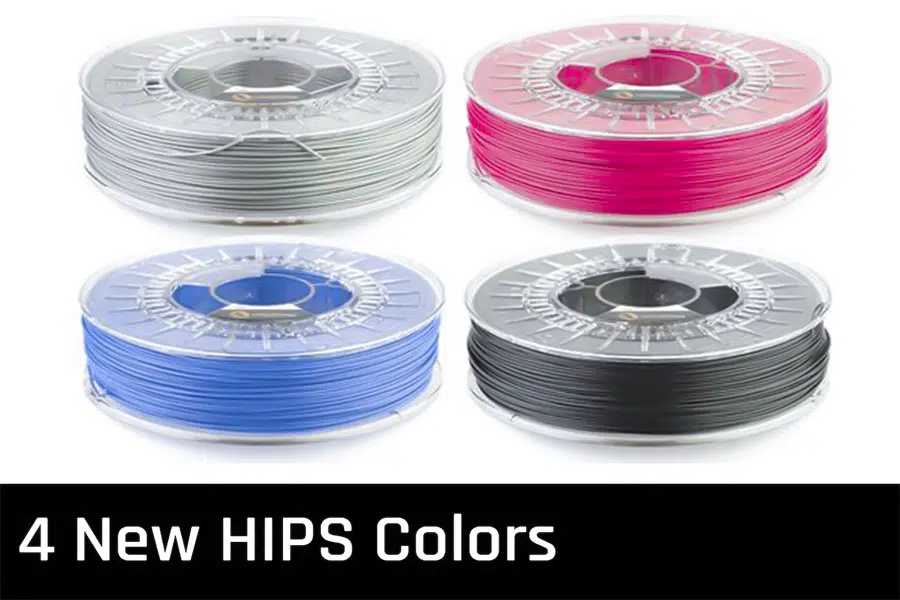
Conclusion
HIPS (High Impact Polystyrene) is an engineering plastic optimized for 3D printing that combines high strength, impact resistance, and soluble support properties. It is suitable for dual-printhead printing, often used as a support material with ABS, and can be easily dissolved with limonene solvent, especially for complex structural prototypes. HIPS printing requires high temperatures (240-260°C) and attention to ventilation (release of trace amounts of styrene), providing a cost-effective solution in industrial design, medical modeling, and other fields, balancing performance, cost, and post-processing efficiency.
📞 Phone: +86 185 6675 9667
📧 Email:info@longshengmfg.com
🌐 Website: https://www.longshengmfg.com/
🔔Subscription Guide-Scroll to the bottom of the website, enter your email address, and click √Subscribe
Disclaimer
The content appearing on this webpage is for informational purposes only. LS makes no representation or warranty of any kind, be it expressed or implied, as to the accuracy, completeness, or validity of the information. Any performance parameters, geometric tolerances, specific design features, quality and types of materials, or processes should not be inferred to represent what will be delivered by third-party suppliers or manufacturers through LS’s network. Buyers seeking quotes for parts are responsible for defining the specific requirements for those parts. Please contact to our for more information.
Team LS
This article was written by various LS contributors. LS is a leading resource on manufacturing with CNC machining, sheet metal fabrication, 3D printing, injection molding,metal stamping and more.

FAQs
1. What is HIPS filament?
HIPS (high impact polystyrene) filament is a thermoplastic modified by adding rubber components. It retains the easy processing characteristics of ordinary PS while significantly improving the impact resistance. It has excellent interlayer bonding and dimensional stability, a wide printing temperature range (220-260℃), and can be dissolved by organic solvents such as limonene, making it an ideal choice for dual-material printing.
2. What is the use of HIPS?
HIPS is mainly used in the field of 3D printing: 1) as a soluble support material used in conjunction with engineering plastics such as ABS; 2) to make functional prototypes that need to withstand mechanical stress; 3) to produce lightweight packaging samples; 4) in the medical field to make anatomical teaching models. Its balanced mechanical properties and processability make it a full-process solution from concept verification to functional testing.
3. What is the difference between PVA and HIPS?
As a completely water-soluble material, PVA is safer and more environmentally friendly to operate, but it is limited by its strong hygroscopicity and low strength; HIPS requires organic solvents to dissolve and has higher mechanical strength and heat resistance (heat deformation temperature of 90°C). PVA is more suitable for printing fine structures with PLA, while HIPS is the best supporting partner for high-strength materials such as ABS.
4. What is the significance of HIPS in design?
HIPS material has revolutionized the product design process: 1) It realizes complex inner cavity structures that are difficult to process with traditional processes; 2) It greatly reduces post-processing time through soluble support (compared with mechanical removal efficiency increased by more than 50%); 3) Its excellent impact resistance (impact strength of 10kJ/m²) makes functional testing closer to the final product performance; 4) As a low-cost engineering plastic, it significantly reduces the material cost in the R&D stage.



